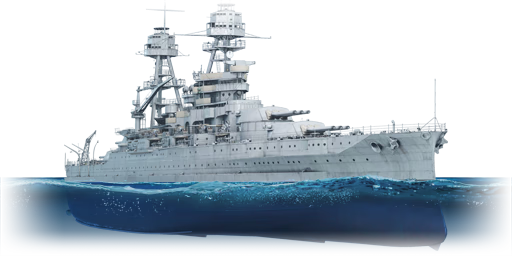The USS Arizona was one of the two Pennsylvania-class battleships built for the US Navy, laid down in 1914 and commissioned in late 1916. She saw only stateside service during hostilities in the First World War, but notably escorted President Woodrow Wilson on his way to the Paris Peace Conference at the end of the war. She then mostly served in a training capacity until the beginning of the American involvement in WW2, where she was tragically sunk in a massive explosion, and still lies in Pearl Harbor today.
She was introduced in Update "Wind of Change", and gains an extra two guns to her main battery compared to the preceding USS Nevada. In exchange, as she is in her 1938 refit, and as such has less secondary and anti-aircraft capability in comparison to the 1944 refit of Nevada. That firepower comes with an extremely long reload of 40 seconds; splitting the battery is a necessity when engaging multiple enemies.














